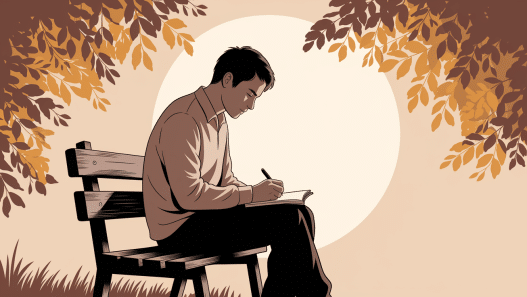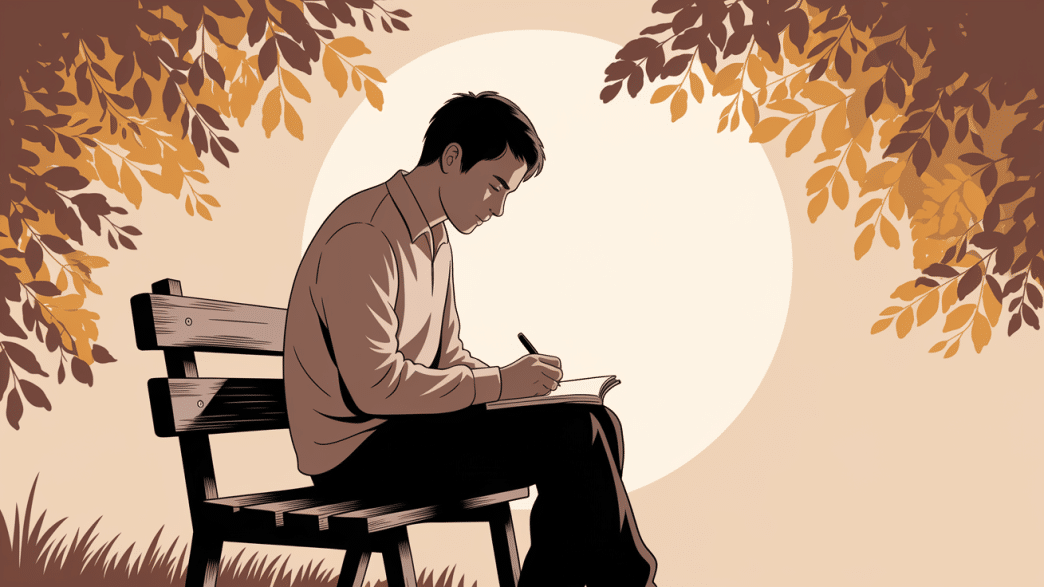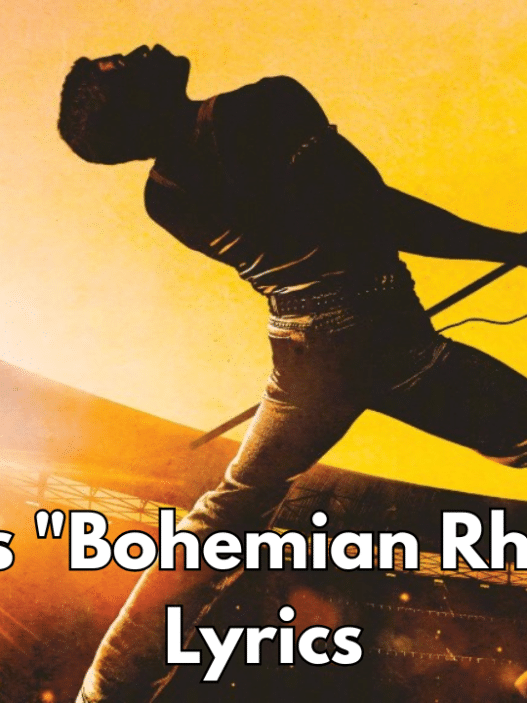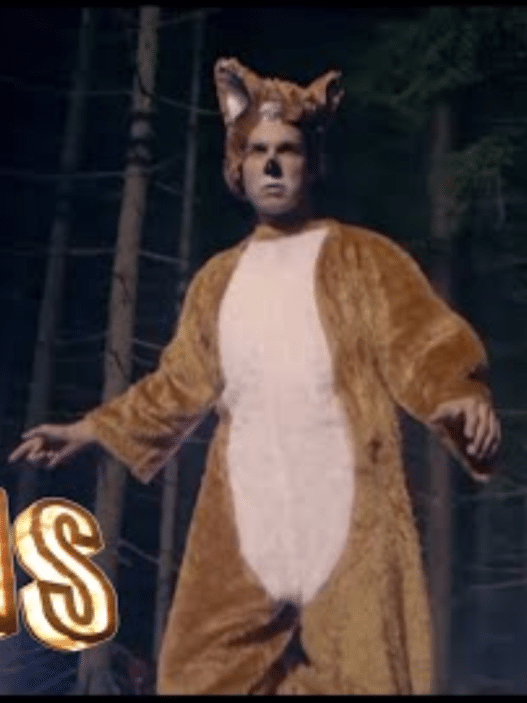Every powerful song begins with a single word, a phrase, or an idea waiting to be developed.
For many songwriters, the hardest part isn’t having something to say—it’s finding the right way to say it through lyrics that connect with listeners.
Songwriting is both an art and a craft. While natural talent plays a role, the ability to consistently produce quality lyrics comes from developing specific skills and practices that you can call upon when inspiration seems distant.
In this guide, we’ll share a collection of practical exercises used by songwriters from beginners to professionals, plus insights from influential artists whose lyrics have left lasting impressions on music history.
No matter if you write for yourself or dream of hearing your words on the radio, these approaches will help you craft lyrics with more depth and impact.
How do Lyric Writing Exercises Help You?
Lyric writing exercises help you in many ways. They can break through writer’s block and spark creativity by pushing you to think outside the box.
These exercises help you refine your writing skills, improve rhyme schemes and rhythms, and develop stronger emotional expression in your lyrics.
They also help you better structure your songs and explore different writing techniques, which can lead to a more unique and personal songwriting style.
Most importantly, regular practice with lyric exercises builds consistency, turning songwriting into a habit and improving your craft over time.
Let’s start with our 10 picked lyric writing exercises:
1. Sense Writing

This exercise helps you develop vivid imagery in your lyrics by engaging all five senses. It’s about noticing the details that make a scene or feeling come to life.
How to Do It:
- Pick an object or a scene around you. It could be something as simple as a cup of coffee or the view from your window.
- Take a few minutes to describe it using all five senses: sight, sound, smell, taste, and touch. Try to focus on the little details.
Example: If you’re writing about a cup of coffee, describe how it looks (rich brown color), smells (strong and roasted), feels (warm in your hands), sounds (a quiet hiss as it steams), and tastes (bitter with a hint of sweetness).
Example of lyrics:
| “The steam rises slow, like a whisper on the breeze, The cup is warm, in my hands it feels like peace, The bitter taste lingers, but it’s sweet in disguise, I close my eyes, and breathe in the rise.” |
2. Stream of Consciousness
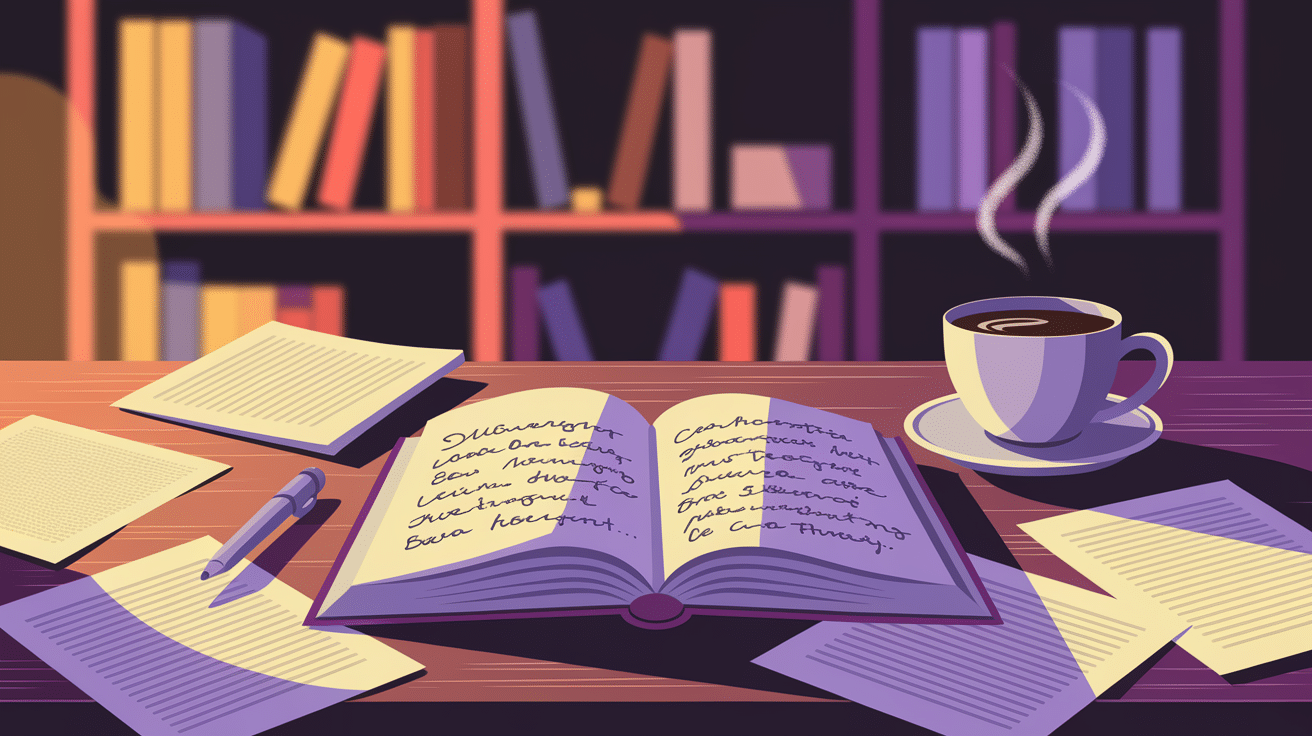
Stream of consciousness is all about writing whatever comes to mind without editing. This helps you get past mental blocks and tap into raw, unfiltered creativity.
How to Do It:
- Set a timer for 10 minutes.
- Write continuously without stopping to think or edit. Let your thoughts flow freely, no matter how random or disconnected they might seem.
- After the timer goes off, look at your writing. You’ll often find some interesting phrases or ideas that can be shaped into lyrics.
Example: Let’s say your mind starts wandering to thoughts about the weather. You might end up writing: “The rain taps on my window, like a drum, soft and steady, the world outside is still, but my heart is heavy.”
Example of lyrics:
| “The rain falls slow, tapping on my window pane, The night is quiet, but my thoughts are like a train, Running off the track, I can’t stop them from going, Every thought, like the wind, keeps blowing.” |
3. Word Ladder
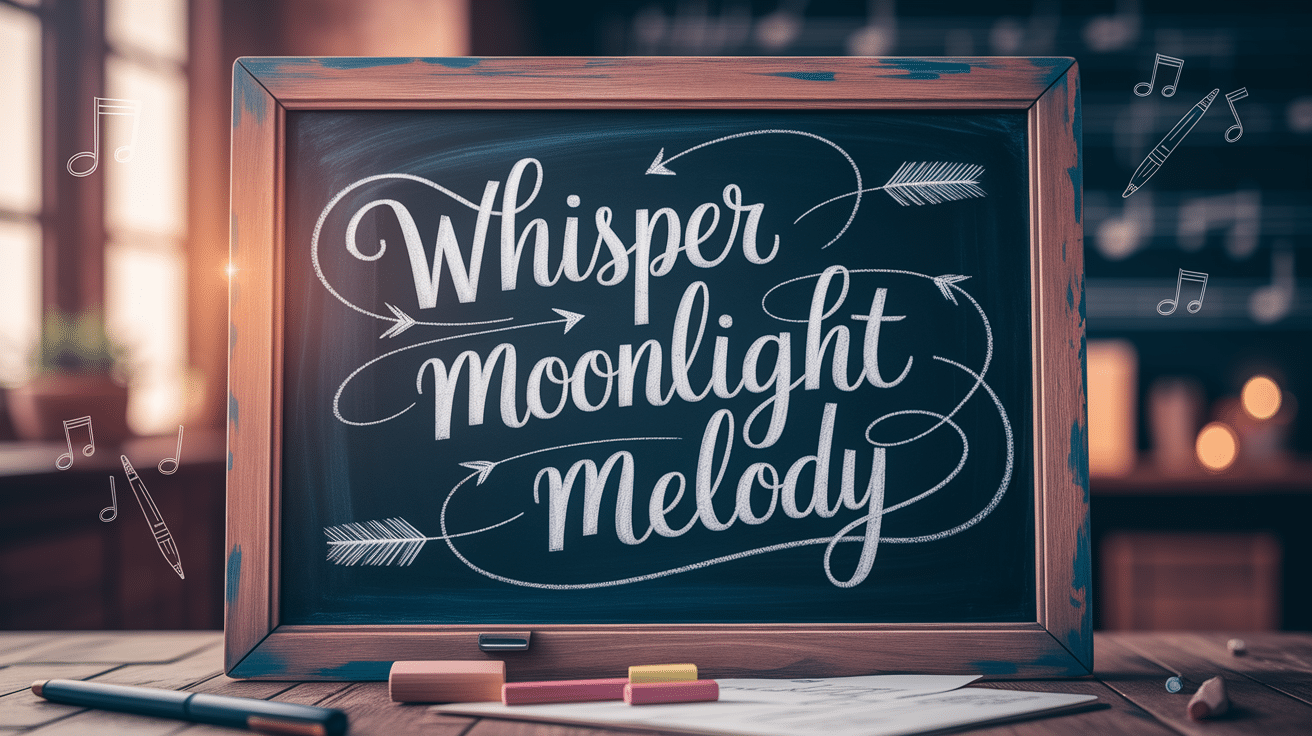
The Word Ladder exercise is about stretching your creativity by connecting random words. It helps you expand your vocabulary and discover new connections between words.
How to Do It:
- Start with a random word. It could be something simple like “sun” or “love.”
- From that word, create a list of five other words that relate to it. These words can be synonyms, antonyms, or just words that come to mind.
- Use these words to create a verse or chorus.
- Example: Starting with “sun,” you might get words like “light,” “shine,” “warm,” “sky,” and “day.” You can then use these to write a lyric.
Example of lyrics:
| “The sun is shining, light breaks through the gray, Warmth in my heart, as I start a new day, The sky is clear, no clouds to block my view, The light on my face feels like a dream come true.” |
4. Emotional Exploration

This exercise encourages you to dig deep into your emotions and express them in your lyrics. It helps bring out raw, relatable feelings that can connect with listeners.
How to Do It:
- Think about a strong emotion you’ve felt recently. It could be anything from joy to sadness, frustration, or love.
- Spend some time reflecting on how that emotion felt in your body—did your chest tighten? Were you smiling or crying?
- Write about that emotion from different perspectives: how it feels physically, mentally, and emotionally.
- Example: If you’re exploring the feeling of loneliness, describe the physical sensations (coldness, isolation) as well as the emotional side (sadness, longing).
Example of lyrics:
| “I feel the cold in my bones, a space where warmth should be, The silence wraps around me, it’s louder than it seems, I’m reaching out for something, but it’s just out of sight, The loneliness in my heart keeps me up at night.” |
5. Rhyme Mapping
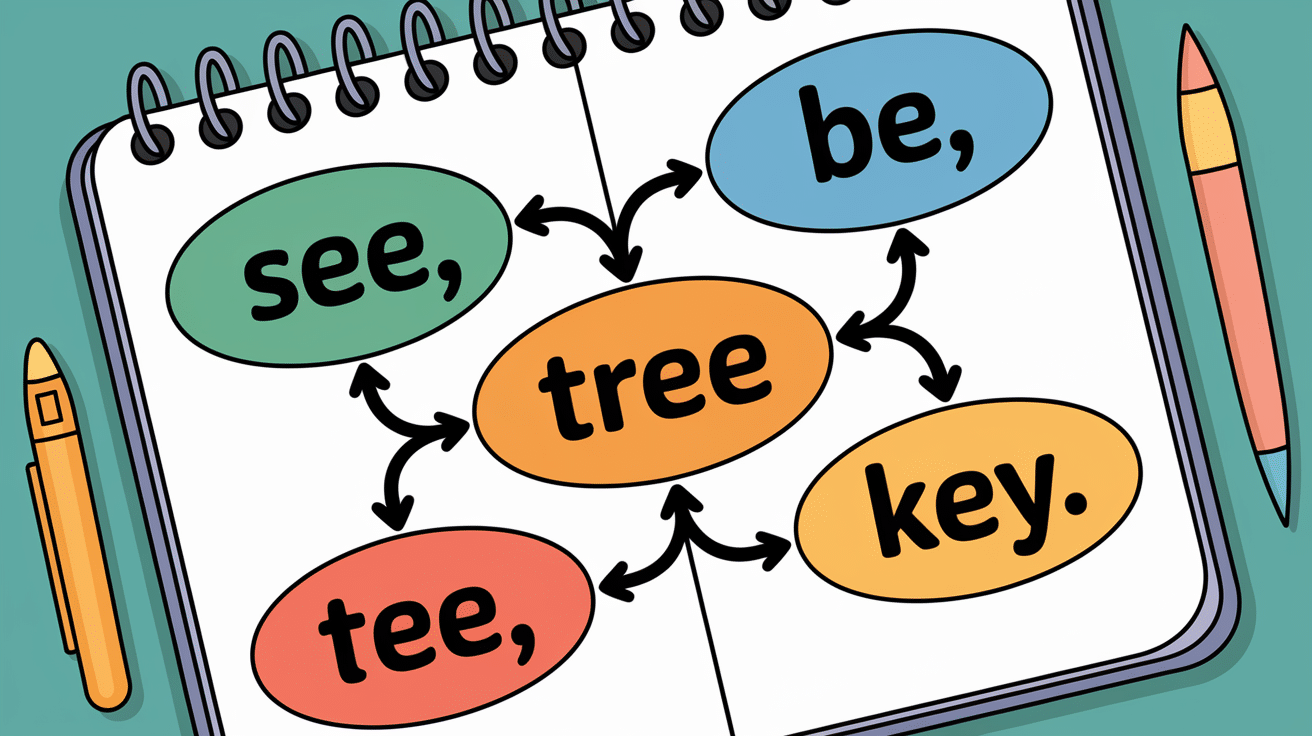
Rhyme Mapping is a simple way to build out your lyrics using rhyming words. It helps you think about how your lyrics flow and where the rhymes should fall.
How to Do It:
- Pick a short phrase or line you like.
- Write it down and then brainstorm words that rhyme with each key word in the phrase.
- Use those rhymes to create additional lines.
Example: Start with “I’m feeling free” and brainstorm rhyming words like “see,” “be,” “tree,” and “key.” Then use those rhymes to create more lyrics.
Example of lyrics:
| “I’m feeling free, I can finally see, The chains are gone, now I can just be, The sky is clear, like a new oak tree, My heart’s unlocked, and it’s the right key.” |
6. Perspective Shift

Writing from a different point of view can help you see things in a fresh light and add depth to your lyrics.
How to Do It:
- Take an object, a pet, or a person, and write from their perspective.
- It could be as simple as a chair in a room, or even the wind or a car.
- This will force you to think outside your usual narrative and create unique storytelling lyrics.
Example: Write a song from the perspective of an old, abandoned house.
Example of lyrics:
| “I’ve seen the years pass by, the walls are cracked, I hold the stories that no one comes back to unpack, The windows are dusty, the door is creaky, But I remember love, before it got so weak.” |
7. Storytelling
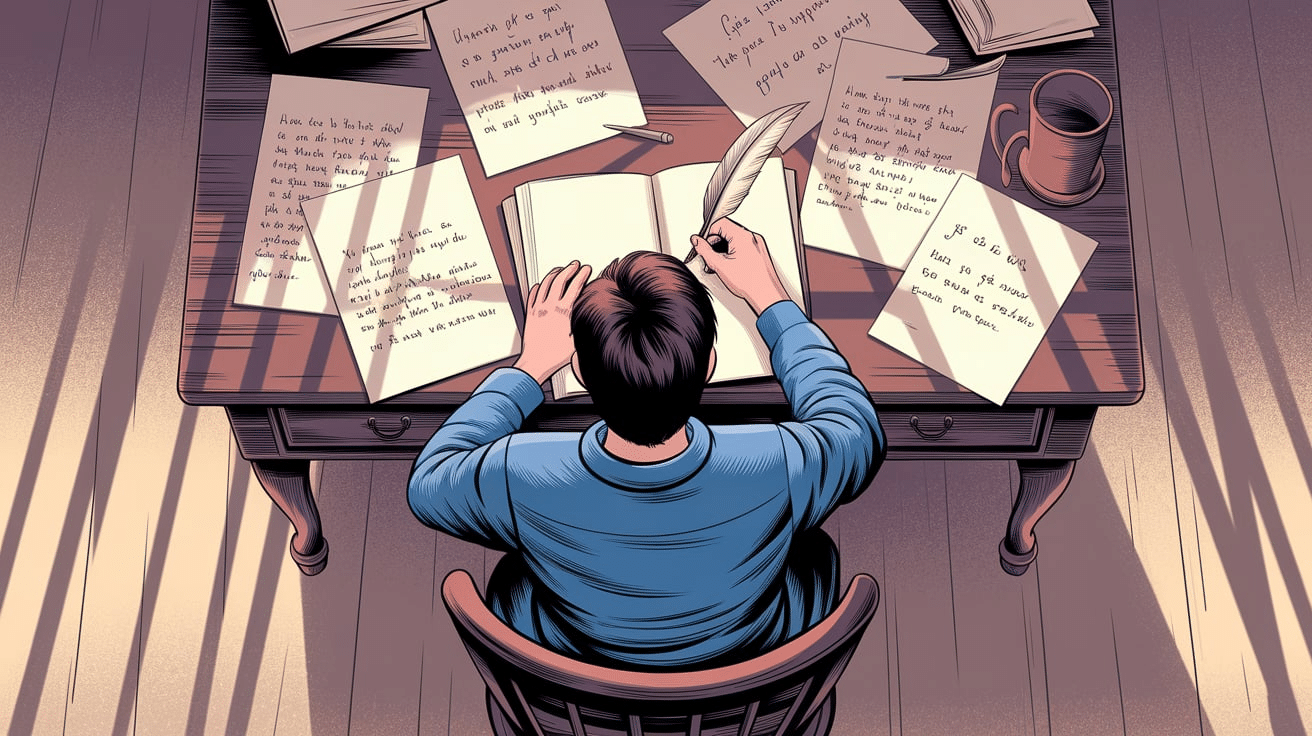
Great lyrics often tell a story. This exercise is about practicing your narrative skills in songwriting.
How to Do It:
- Write a short story with a clear beginning, middle, and end.
- Make sure it has conflict, a turning point, and a resolution.
- After writing the story, condense it into lyrics, keeping the key moments intact.
- Example: Write a song about a person who finds something they’ve lost, and the emotions that come with it.
Example of lyrics:
| “I lost my way in the middle of the night, Searching for something I thought was out of sight, Then I found it, buried in the sand, The peace I needed, right in my hand.” |
8. Cut-Up Method
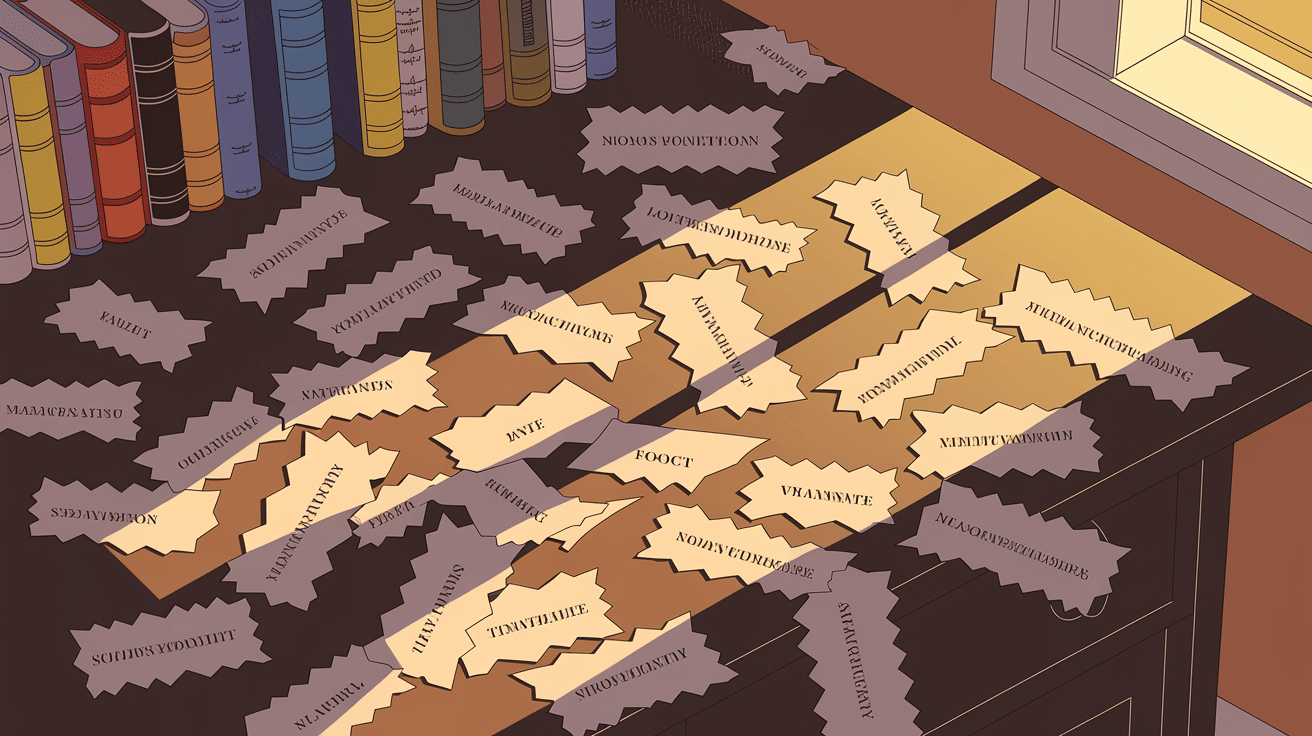
The cut-up method can help you break free from traditional writing structures and create unique, unexpected lyrics.
How to Do It:
- Write a few random phrases or lines on small pieces of paper.
- Cut them up and mix them around.
- Pick a few and try to form a song with them, even if they don’t seem to make sense at first.
- Example: Take random lines like “wind blowing through trees” and “silence of the moon” and see where they take you.
Example of lyrics:
| “Wind blowing through the trees, Silence of the moon, Nighttime whispers carry, We’ll be free so soon.” |
9. Song Analysis
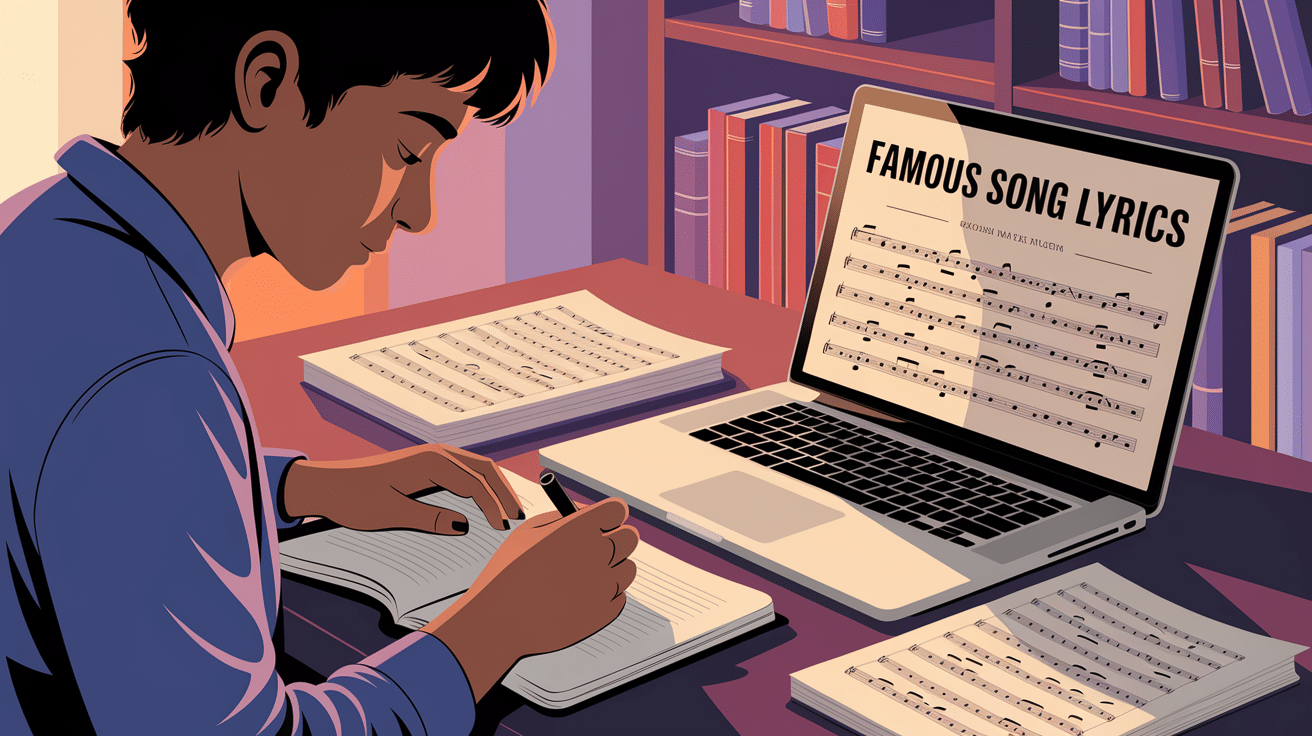
Analyzing the lyrics of songs you admire can teach you useful techniques for your own writing.
How to Do It:
- Pick a song you love and write down the lyrics.
- Break it down—look at the rhyme scheme, themes, and structures.
- Take note of how the songwriter uses literary devices (like metaphors, similes, and imagery).
- Then, try applying some of those techniques to your own writing.
Example: Study a song like “Fast Car” by Tracy Chapman to understand how she tells a compelling story.
Example of lyrics:
| “I see the city lights, fading into the blue, My heart’s racing fast, but it’s slowing down too, The road ahead is long, but I know where I’ve been, Every mile, a memory, every turn a new win.” |
10. Writing to a Melody
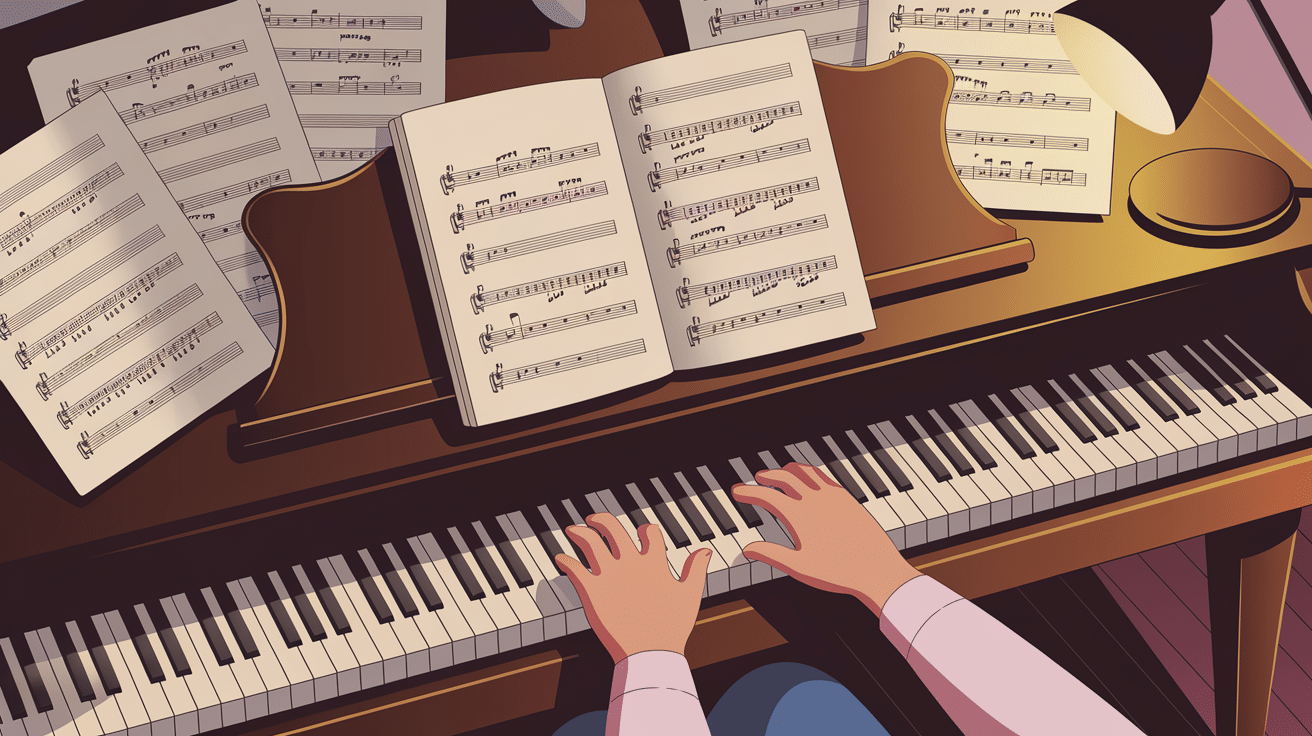
This exercise helps you match your lyrics to the flow and rhythm of music. It’s crucial in songwriting because lyrics and music need to work together, creating harmony between the words and the melody.
When you write lyrics to a melody, you focus on how your words fit with the beat, tone, and mood of the music.
How to Do It:
- Listen to an instrumental track or melody you enjoy.
- Write lyrics that match the rhythm and tone of the music.
- Focus on how the words flow with the beat and melody.
Example: Imagine you’re writing to a slow, soft piano melody. The melody has a gentle, calm feel, so your lyrics could reflect feelings of love, peace, or longing. Here’s how you could write to match that slow tempo:
Melody Example: Slow, steady piano, with a gentle rhythm.
Lyrics:
| “Under the moon, the world is still, Whispers of love, the night to fill, I feel your hand, it’s soft, it’s near, The calm in your eyes, it’s crystal clear.” |
Notice how the lyrics match the slower, smooth flow of the melody. Each phrase fits naturally with the rhythm of the music.
Also Read: How To Master Your Vocal Tone with Easy Tips
Learn from the best: Lyric Writing Tips from 7 Iconic Artists
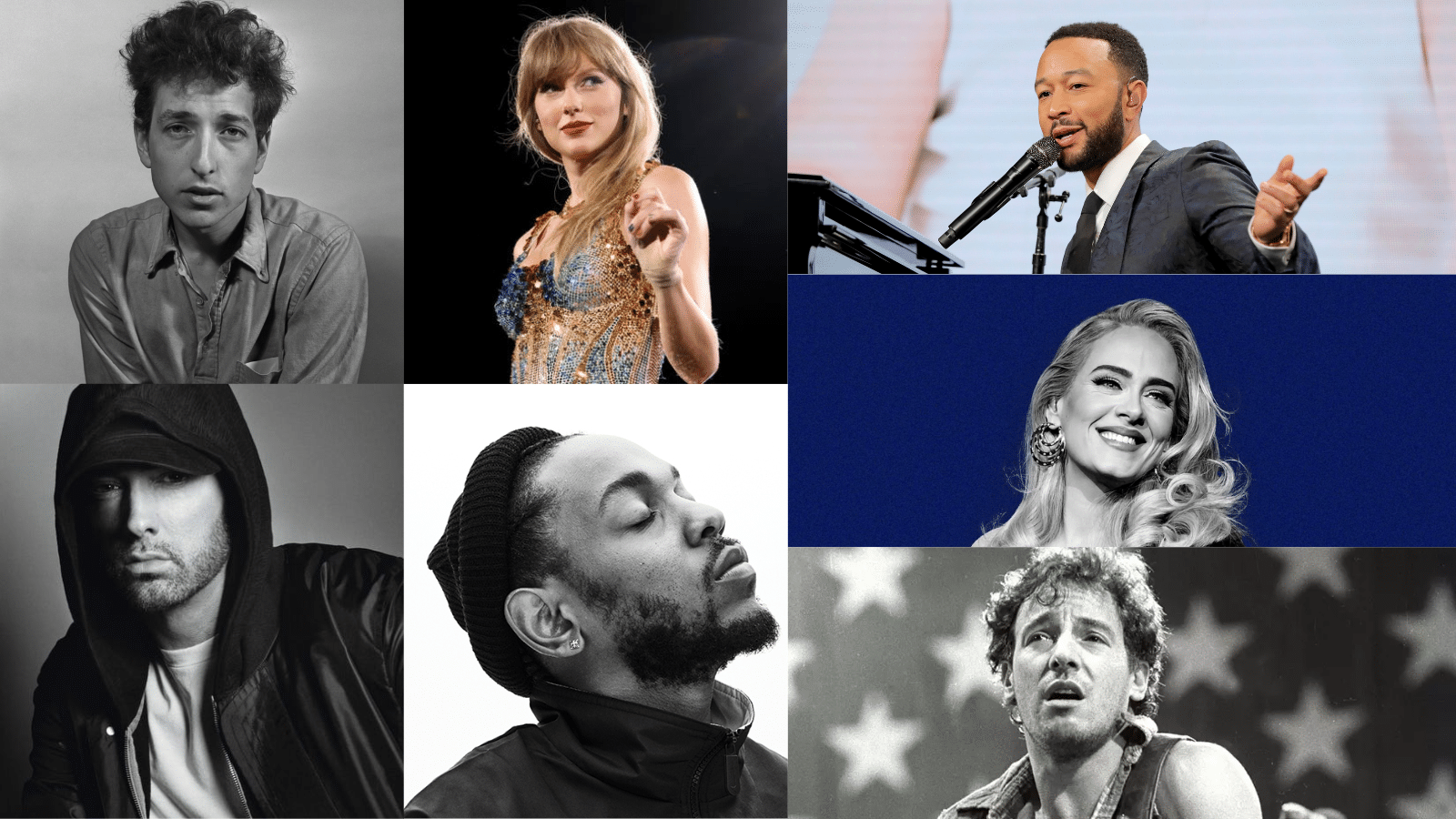
Do you know what some of the most iconic artists in music have to say about lyric writing?
From Bob Dylan’s focus on truth to Taylor Swift’s advice on writing what you know, these legends offer valuable tips that can elevate your songwriting and inspire authenticity in your lyrics.
In this section, we’ll take a closer look at lyric writing advice from seven legendary artists.
Each of these musicians shares valuable insights on how to approach songwriting, offering tips on authenticity, emotion, and creativity that you can apply to your own writing process.
1. Bob Dylan
“I don’t consciously try to write poetry. I just write the way I feel, and I write the truth.”
Dylan emphasizes writing honestly and from the heart, without overthinking the process. His lyrics are known for their deep, universal themes and emotional authenticity.
“Blowin’ in the Wind” and “The Times They Are A-Changin’” showcase his simple yet powerful approach.
2. Taylor Swift
“Write what you’re feeling, and write what you know. It’s really easy to get stuck in a trap where you try to be too clever or too metaphorical.”
Swift encourages authenticity in lyric writing. She stresses the importance of staying grounded in personal experience, which helps the listener connect emotionally.
“All Too Well” and “Fearless” are perfect examples of Swift’s deeply personal, relatable lyrics.
3. John Legend
“I think the best songs come when you write from a place of emotion. You want to write about something that touches people, that makes them feel something.”
Legend believes that the emotional depth of a song is key to making it resonate with listeners. He advises songwriters to focus on feelings.
“All of Me” expresses deep, heartfelt love and connection, with simple yet profound lyrics.
4. Eminem
“Sometimes, I write lyrics in a way that’s like a puzzle. I’ll come up with rhymes and fit them together later. But first, I get all my thoughts down on paper.”
Eminem emphasizes brainstorming and getting all your ideas down before focusing on structure. He works through his lyrics by playing with words and fitting them into the right place.
“Lose Yourself” showcases his ability to create powerful narratives and complex rhymes.
5. Adele
“I don’t write for the radio, I write for myself. I write songs for people who need to hear them.”
Adele writes from a place of authenticity, focusing on real emotions rather than trying to conform to trends. She believes in making music that speaks to her own experiences.
“Someone Like You” captures raw emotion and vulnerability, making it universally relatable.
6. Bruce Springsteen
“I don’t write in an effort to be understood. I write in an effort to understand myself, to understand the people around me.”
Springsteen’s approach to songwriting is reflective and introspective. He writes to make sense of his emotions and the world around him, capturing universal experiences.
“Born to Run” and “The River” are songs where Springsteen explores themes of escape, struggle, and hope.
7. Kendrick Lamar
“I don’t write lyrics that are too complicated. I make sure that my words are accessible and meaningful. I want the listener to understand the message behind the song.”
Kendrick Lamar focuses on clarity and meaning. While his lyrics are thought-provoking, he makes sure they are understandable and carry a powerful message.
“Alright” is a perfect example of his approach, with simple yet impactful lyrics about hope and resilience.
These artists have shaped music with their unique lyric-writing techniques, often focused on emotional authenticity, simplicity, and personal connection. You can incorporate these tips into your own writing to create meaningful and resonant lyrics.
Conclusion
Becoming skilled at writing lyrics isn’t about waiting for sudden inspiration – it’s about showing up consistently and practicing techniques that help you express thoughts and feelings in memorable ways.
The exercises in this guide give you practical tools to overcome creative blocks and develop a more personal writing style.
Try incorporating one or two of these exercises into your regular writing routine. You might be surprised by what emerges when you approach writing from new angles.
Most importantly, be patient with yourself. Growing as a lyricist takes time, but with consistent practice and these proven techniques, your songs will gradually become more vivid, honest, and moving.
Even if you’ve never written a song before, you can Start Here for a simple, no-stress guide.







